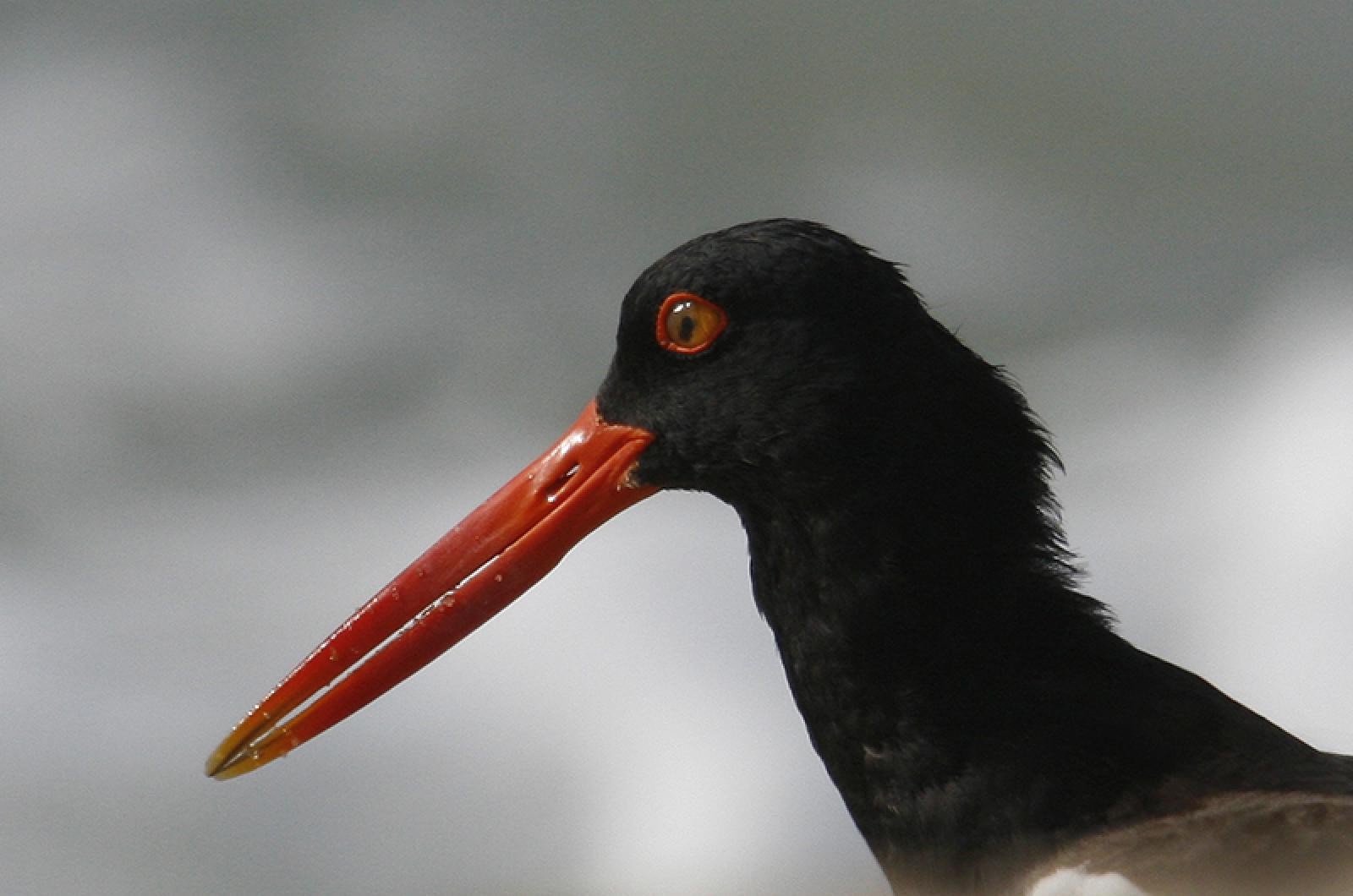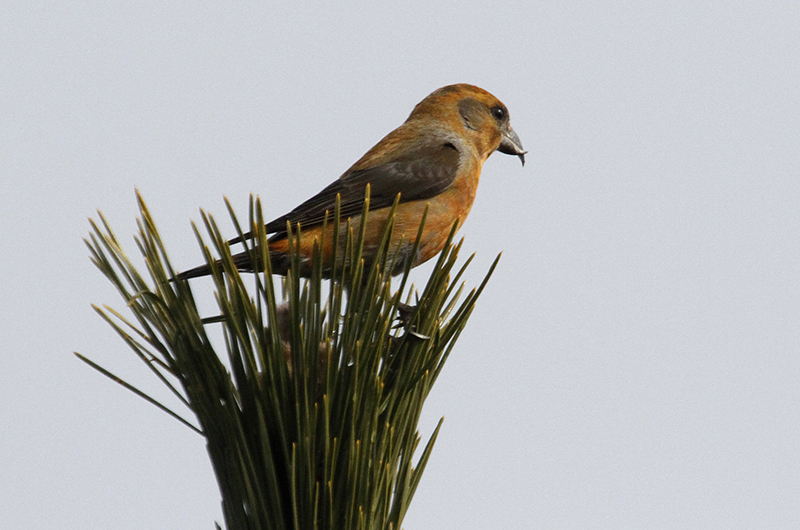We have seen irruptive species — residents of the northern woodlands that irrupt (migrate) southward when their foods are scarce. The season started early with the arrival of red-breasted nuthatches. They are also the only ones that have remained here in consistent numbers.
Pine siskins were next, and e-bird data shows they still are widespread across Massachusetts but I have not heard of any recent sightings. Snowy owls are still rather scarce. There have been a few sightings of evening grosbeaks and both white-winged and red crossbills. With the exception of the red-breasted nuthatches, they have all been rather nomadic, not staying in any one location. This is typical.
There have been more red-crossbill sightings this season than I recall in other invasion years. This week we have three reports. Bob Shriber spotted an amazing 49 of them at the Gay Head Cliffs on Dec. 14. They were all flying overhead, likely on their way off-Island. He also saw three of them at the cliffs on Dec. 15. And on Dec. 20 I spotted seven of them near the upper end of Deep Bottom Cove, as they foraged along the edge of the pine woodlands. They were very noisy, and from their call notes I thought there was a large flock of blackbirds — then I saw them.
Bird Sightings
Otherwise it has been a rather quiet week, notable for a few late-lingering species. Baltimore orioles have been spotted in two yards. Stan and Marie Mercer reported one at their feeder on Dec. 15 and Sande Weinstein spotted two of them at her feeders on Dec. 16. The American kestrel is still lingering at Katama Farm — Hans Goeckel spotted it on Dec. 18 and Lanny McDowell spotted it on Dec. 19.
At Eel Pond a lone American oystercatcher was spotted by Walt Looney on Dec. 14, and I saw it again on Dec. 20. Bob Shriber spotted four greater yellowlegs on Black Point Pond on Dec. 19. Morgan Hodgson spotted a lone great egret at Lobsterville on Dec. 20. And on Dec. 16, Lanny McDowell spotted a flock of 50 horned larks hiding amongst the stubble of last season’s sunflowers at the Katama Farm, while Luanne Johnson, Nancy Weaver, and Margaret Curtin counted 80 of them there on Dec. 20. Will these species hang around long enough to be seen on the annual Christmas Bird Count? Time will tell.
Of our winter residents, most notable is Claire Ganz’s sighting of an immature bald eagle flying along the north shore. And I spotted a peregrine falcon zipping along State Beach on Dec. 20. I think it is a safe bet to call both of these species winter residents, although either species could be transients day-tripping from elsewhere.
Eastern bluebirds have been hanging around feeders. They always seem
to be at Holly Mercier’s feeders, and they have also been seen by Allouise Morgan, Gabrielle Whitcombe, Cira Goldstein and Albert Fischer.
Flickers are widespread. Sharon Pearson had two flickers at her feeders on Dec. 16, and Paul Nordstrom August had one on Dec. 17. And I have seen them flying up off the ground in several locations as I traverse the Island. They are rather conspicuous with their white rumps and bright yellow underwings.
Waterfowl are intriguing. Bob Shriber reports that the numbers of green-winged teal are not as abundant on either Chilmark Pond and Black Point Pond now as they were a few weeks ago. And seaducks are not as abundant so far this season as they have been in recent years. Common eiders and all three species of scoters seem to be in groups of 15 to 25, where they have been seen by the hundreds in recent winters and even by the thousands, 30 and more years ago.
Goldeneye, scaup, and bufflehead numbers still seem to be increasing. We shall see whether these trends are apparent on the Christmas Bird Count, when we have more thorough coverage.
Yellow-rumped warblers are more scarce than they used to be 30 years ago. Nowadays we generally see them as single birds. Gus Ben David notes that one finally showed up on Dec. 19. Therefore, Bob Shriber’s report of a flock of 15 at Black Point Pond on Dec. 19 is notable. But they used to be abundant through the late fall and winter.
Finally, John Nelson reports that the Ocean Park brant roost at northern end of Sengekontacket Pond, along with some Canada geese. They are likely avoiding our nocturnal mammalian predators (skunks and raccoons) by roosting on the water.
Please email your sightings to birds@mvgazette.com.
Robert Culbert is an ecological consultant with Nature Watch LLC living in Vineyard Haven.









Comments
Comment policy »